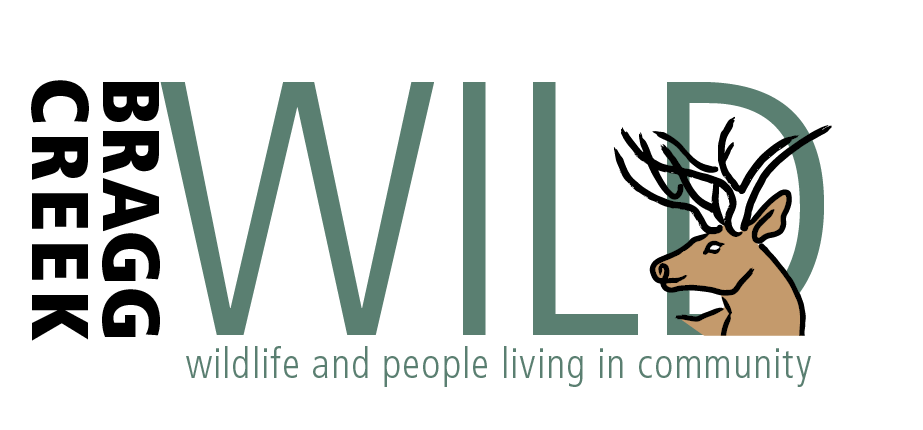Living with wildlife in our Alberta winter
Many of our wild neighbours have disappeared from our lives for a few months, some hibernating, some in a state of “torpor” (such as bears), and some who’ve migrated to warmer climes till spring.
But there are still lots of them around, and unfortunately the ones who stay put can come to be seen as a nuisance in winter. Squirrels, for example, are on the lookout for food sources, and can often be seen raiding bird feeders – more on that later… Racoons (yes, they’ve been spotted in Bragg Creek very recently) are infamous raiders of human garbage bins.
Obviously, we can avoid encouraging potential nuisance visitors by using the same caution we use the rest of the year round, like being careful with garbage.
“Nuisance” occurs where humans and wildlife have unwanted encounters. There’s a range of causes for negative interactions with wildlife, but there’s a lot we can do to mitigate them: some long term, some immediate.
According to most recent figures, human population on our planet reached 8 billion in November 2022. But we’re only one among 8 to 10 million other species on the planet, according to biodiversity expert Andrew Gonzalez, speaking on CBC radio about the COP15 30 by 30 biodiversity initiative. All species have a role to play in the complex network of life on the planet, though sometimes what they need to do to get by can seem to get in the way of what we humans want. That’s when we sometimes see them as a “nuisance”.
Habitat loss / fragmentation leads to increased wildlife presence in human residential areas, whether in the city or smaller centres like Bragg Creek. At policy level, we can work to ensure wildlife corridors are respected when planning development, and when we’re making changes to our individual properties: we can ensure we don’t block them with impenetrable fencing, for instance, or that we don’t chase them away with excessive human activity.
In the short term, though, there’s a lot individuals can do by following guidelines like:
- Don’t leave attractants lying around – keep garbage etc. locked up in sheds and garages.
- Don’t feed wildlife – that way they won’t become habituated.
- Allow wildlife free passage through the landscape so they can move on easily.
 Winter’s a time of scarcity for wildlife – a hungry time. Even moose and deer struggle, grazing where they can on twigs, dry grass, bark and other brush. They need to conserve precious energy by doing as little as possible.
Winter’s a time of scarcity for wildlife – a hungry time. Even moose and deer struggle, grazing where they can on twigs, dry grass, bark and other brush. They need to conserve precious energy by doing as little as possible.
In the winter we can help wildlife by “leaving the leaves”, allowing brush piles to offer shelter to smaller mammals, not disturbing them when they need to conserve energy – exercise patience on the roads and the trails (don’t scare them so that they have to run off).
But many of us feel that we can help birds that stick around in the winter by feeding them. The truth is that birds have survived Alberta winters for many millennia without human help. Those who aren’t evolved to withstand this cold, fly south. If we can’t resist the urge to leave food for them, though, we can observe a few key pointers to make sure we don’t cause problems for those birds:
- Keep cats indoors so they don’t pose a threat to birds coming to our bird feeders.
- Put bird feeders away from the house, so the birds don’t mistakenly fly into windows.
- Use feeders that don’t allow squirrels and the like to get into them.
Let’s stay alert to what will harm and what will help our wild neighbours at this time of year!
As always, if you do sight wildlife – either alive or not – please report it using our online form. This is so useful for us to know where to focus conservation efforts, and we particularly want to keep tabs on animals killed on our roads at this time of year.
Bragg Creek Wild sighting report form


























